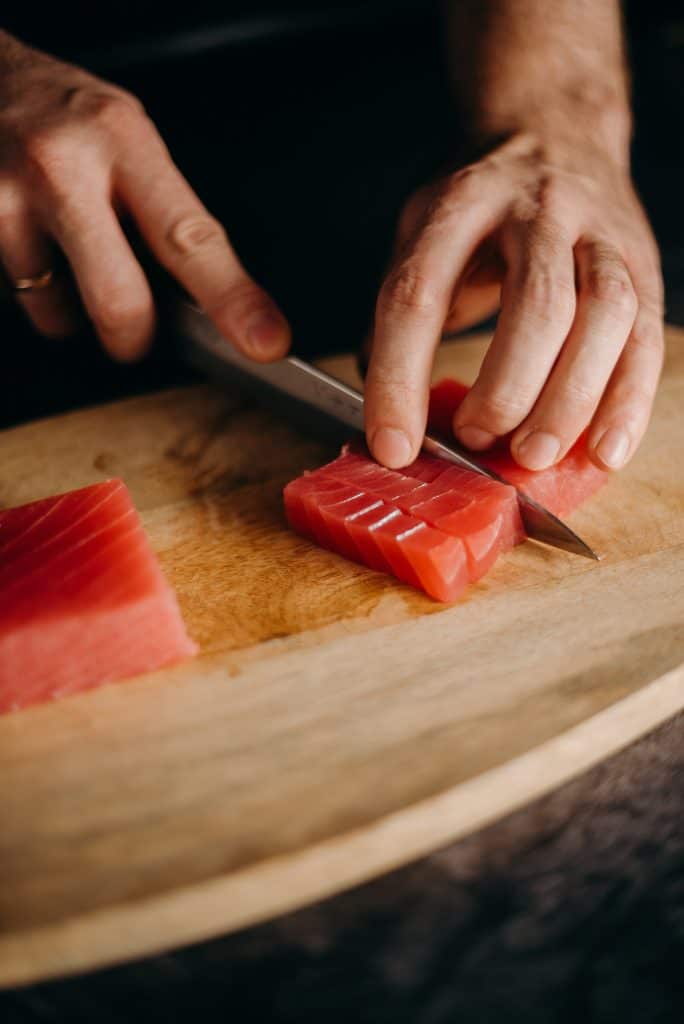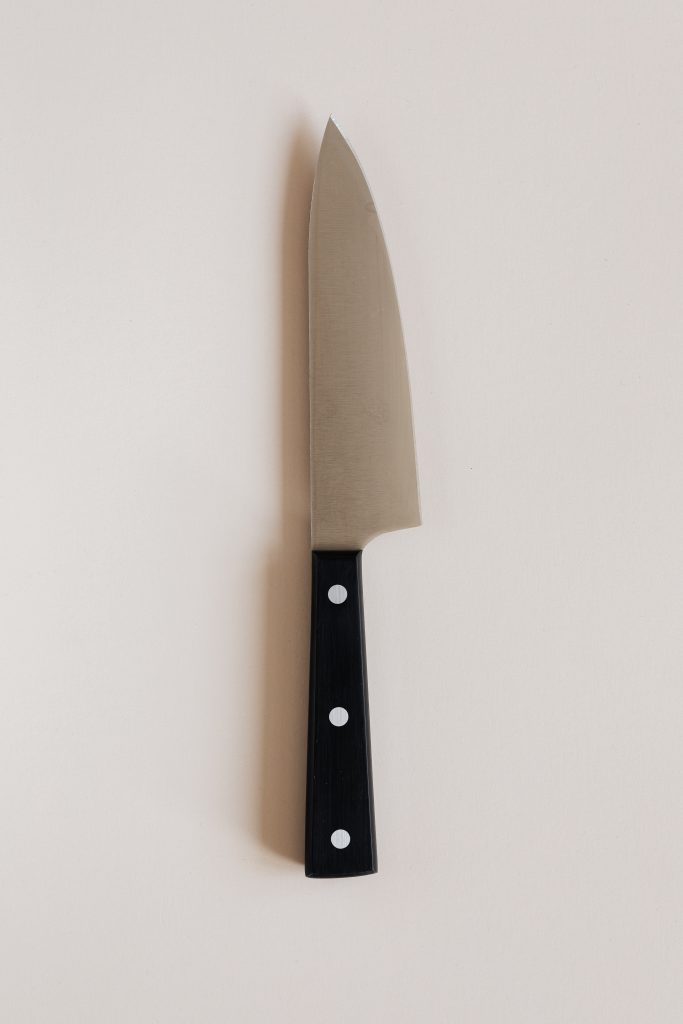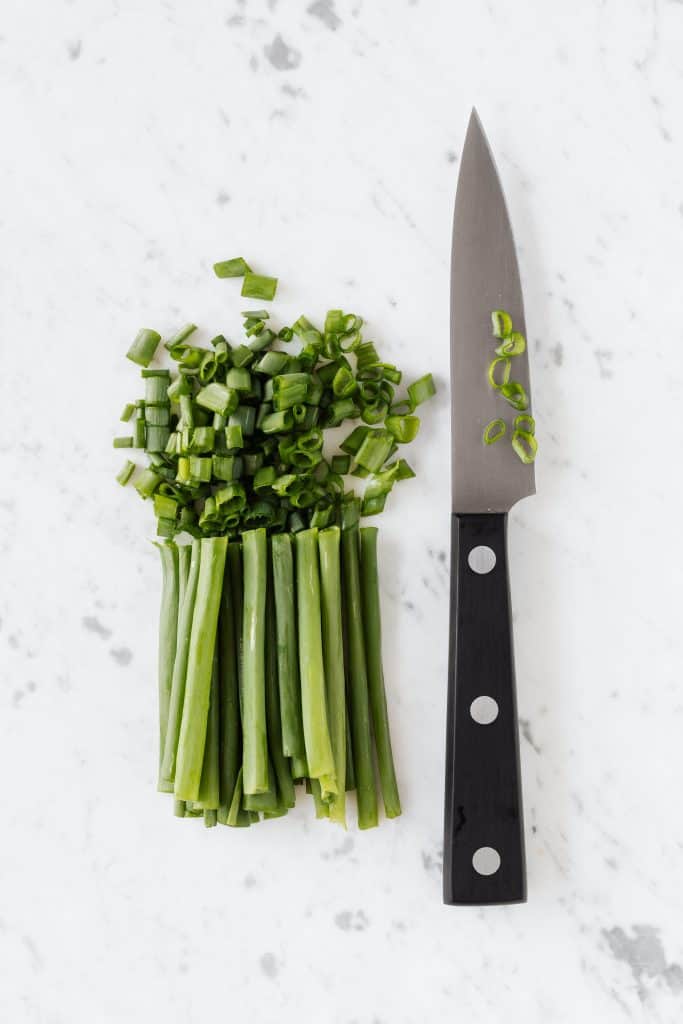As an Amazon Associate we earn from qualifying purchases.
This likely isn’t the first time you’ll be hearing of this: a dull knife is far more dangerous to use than a sharp one. You will need to apply more pressure to use a dull knife, increasing the risk of it slipping and cutting you.
Quick Navigation
How To Use A Sharpening Stone
Here’s a quick guide on how to use a sharpening stone so you can avoid injuries.
Step #1: Find The Right Sharpening Angle
Wet a paper towel and place it on a flat surface. Place your sharpening stone (with the coarse side up) on top of it. This will ensure that the stone doesn’t move around when you begin sharpening.

Before you begin using the sharpening stone to sharpen the knife, you must find the right sharpening angle.
Most experts recommend that you sharpen your knife at a 22.5° angle. To find this angle:
- Grab your knife by the handle, and hold it at a 90° angle with the blade down. You will be holding the knife vertically above the sharpening stone.
- Tilt the knife to half the distance between the blade and the table. The sharpening angle is now 45°.
- Tilt the knife again, halving the distance between the knife and table one more time.
You will now be holding the knife at a 22.5° angle that experts recommend.
Here’s a rule of thumb you must bear in mind. The lower your knife and the smaller your sharpening angle, the sharper the edge will be. By the same token, if you keep the angle between the knife and the table too large, the edge will be relatively dull. However, a blade sharpened at a larger angle will be less prone to chipping.
Once you find the 22.5° angle, you can adjust the angle up or down as you see fit.
Sharpening Angles for Knife Types
If you have a German knife or another knife with a relatively thick blade, you must maintain a sharpening angle between 18° and 20°.
On the other hand, if you have a thin knife like a Japanese knife, you may need to keep the sharpening angle as low as 10° to get that perfectly sharp edge. If you don’t have much experience with thin blades, don’t push yourself too hard, and try to maintain a 15° angle at minimum.

Quick Tip: A great way to find the correct sharpening angle for any blade is to hold the knife with the spine about halfway up your thumb. Place the edge of the knife on the stone, keeping your thumb positioned the same way, and that will give you approximately the right sharpening angle.
Step #2: Define The Edge
Regardless of the type of knife you own, you will follow a similar sharpening process after finding the right sharpening angle. If you’ve never sharpened your knife before, check the packaging and read the manufacturer’s instructions for any nuances.
Ensure that the coarse side of the sharpening stone is on top. Starting the sharpening process with the stone’s coarse side is the fastest way to define the edge.
If your stone requires lubrication, lubricate it. Checking the manufacturer’s instructions is the only way to know for sure. If you have a diamond sharpening stone, the stone will not need to be lubricated.
To define your knife’s edge:
- Starting at the knife’s heel, draw the knife down and across the stone while maintaining the sharpening angle. Try and keep the movement as smooth as possible, and when you reach the tip of the knife, reset the knife’s position.
- Repeat the motion five times before flipping the knife over and repeating the motion another five times.
- Flip the knife back to its original orientation, and draw the knife across the sharpening stone five times – but this time, from the tip to the heel.
- Turn your knife over, and draw it across the sharpening stone five more times – from tip to heel.
- Now that you’ve used the stone’s coarse side for sharpening, turn the stone over, and repeat steps 1-4.

Don’t worry too much if your sharpening motion isn’t perfectly smooth. You will get better at it with time.
But you must make sure that you sharpen the knife on one side as much as you sharpen it on the other side. Use the same angle and repeat the sharpening motion on both sides an equal number of times.
Step #3: Check If The Knife Is Sharp Enough
When you sharpen your knife, a rough edge, often called the burr, will form on the opposite side of the knife.
The burr isn’t easy to see. However, you can feel it with ease. Carefully run your finger from the spine of your knife to the edge every time you sharpen the knife from one side.
As you sharpen it from the other side, the burr will move from one side to the other. Once it does, you can flip your stone over and use the finer side. The burr will get smaller and smaller as you move to finer and finer grits of sharpening stone.
When the burr disappears, you will have sharpened your knife to perfection.
Here’s a video to help you understand it better.
Step #4: Cleaning The Sharpening Stone
It is perhaps the easiest step in the process of sharpening, but one you should never skip.
Grab a damp towel, and wipe the stone to get rid of the oil or water and metal shavings from the stone. After giving it a thorough wipe-down, put the stone back in its box. If you don’t have a box, store the stone in a dry place.
Frequently Asked Questions
Do You Need to Wet a Sharpening Stone?
While you can use a diamond sharpening stone dry, most manufacturers recommend that you wet them with water before use.
Other manufacturers may instruct you to use oil – so make sure you read the instructions before sharpening any knives with the stone.
How Do You Maintain a Sharpening Stone?
Over time, the stone will wear down, and the center of the stone will wear down quicker than the edges will. When you know that the stone is uneven, you must flatten it using a sand screen disc, or it may round the edges of the knives you sharpen on it.
Conclusion
Cuts on the arms and hand lacerations are among the top reasons for ER visits in the US.
With this guide handy, you can easily prevent an injury and chop food faster, better, and safer.
